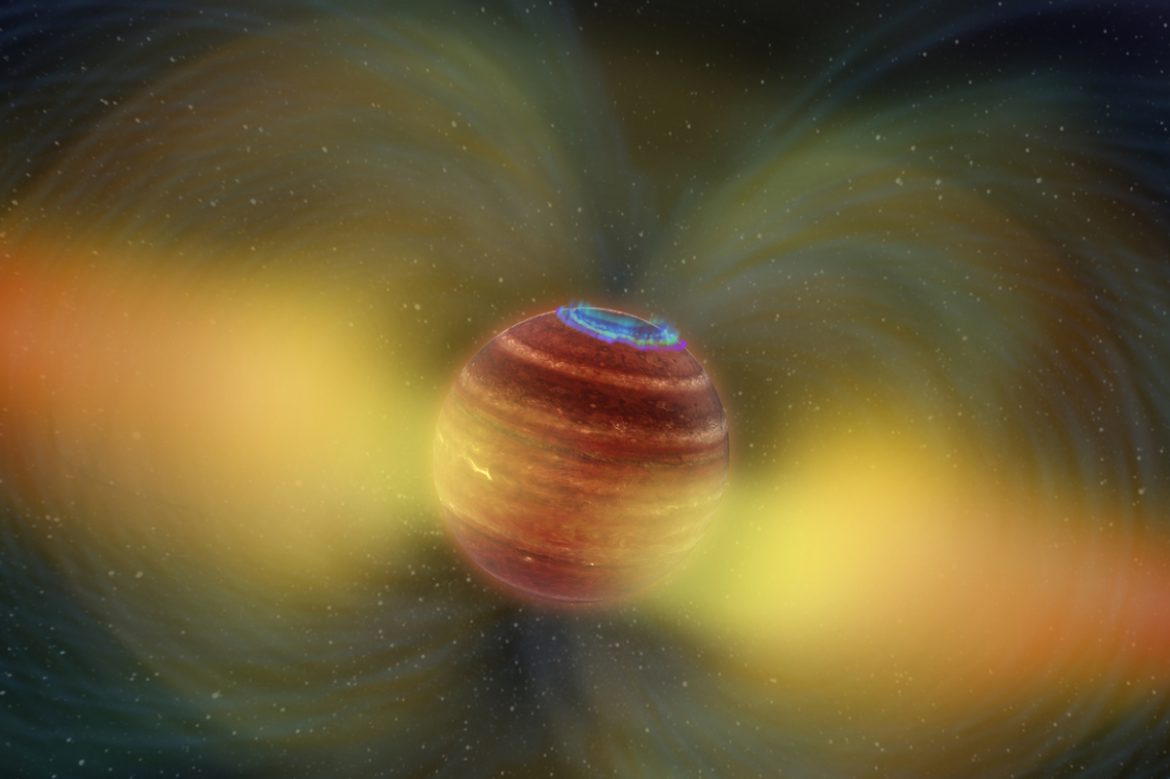
First Radiation Belt Detected Outside the Solar System
Astronomers have described the first radiation belt observed outside our Solar System. According to the astronomers’ paper published in Nature, a belt consisting of energetic electrons has been discovered surrounding a Jupiter-sized celestial body about 18 light-years from Earth.
In high-resolution images obtained by the coordinated use of 39 radio telescope antennas stretching from Hawaii to Germany, intense radio emissions create a double-lobed structure similar to the radio images of Jupiter’s radiation belts, creating a cloud made up of high-energy electrons trapped in the planet’s strong magnetic field.
Strong magnetic fields create “magnetic bubbles” around a planet. This is known as a “magnetosphere” and can trap particles and accelerate them to near-light speeds. All planets in our Solar System with such magnetic fields, including the Earth as well as Jupiter and other giant planets, have radiation belts made up of high-energy charged particles.
Earth’s radiation belts, known as the Van Allen belts, are regions of high-energy particles captured from the solar winds by our planet’s magnetic field. Most of the particles in the belts of Jupiter originate from the volcanoes on its moon, Io.
The object dubbed LSR J1835+3259, which was examined in the study aiming to find similar belts outside the Solar System has a mass about 80 times greater than Jupiter despite having the same size. The radiation belt of this exoplanet, which may almost be considered a brown dwarf, is 10 million times brighter than that of Jupiter’s.
The origin of electrons, on the other hand, is a significant mystery. The object does not appear to revolve around a star and emits no glow. The researchers say a volcanic moon might make sense, but that’s still speculative.
Knowing that LSR J1835+3259 has a radiation belt will help astronomers interpret data obtained from exoplanets in the future. Exoplanet magnetic field research is truly in its infancy. Characterizing these zones is an important step that may give us more insight into the life stories of these objects.[/vc_column_text][/vc_column][/vc_row]
REFERENCES
- 1. https://www.sciencenews.org/article/radiation-belt-outside-solar-system
- 2. https://phys.org/news/2023-05-astronomers-belt-solar.html
